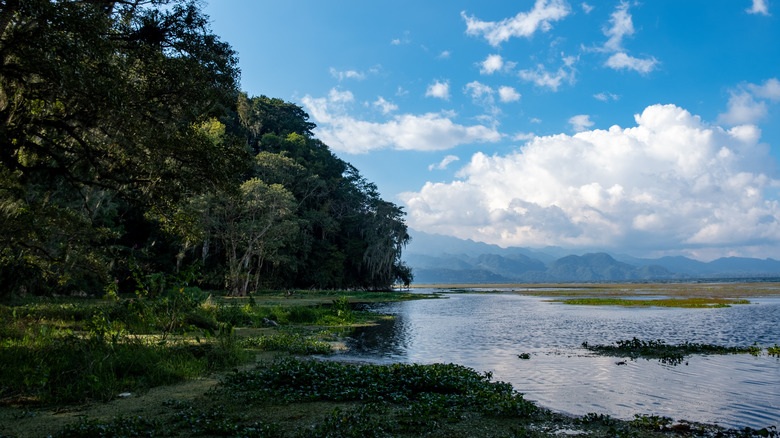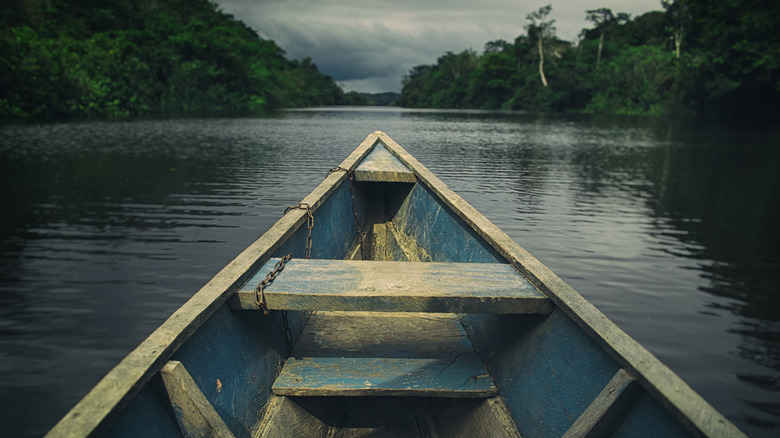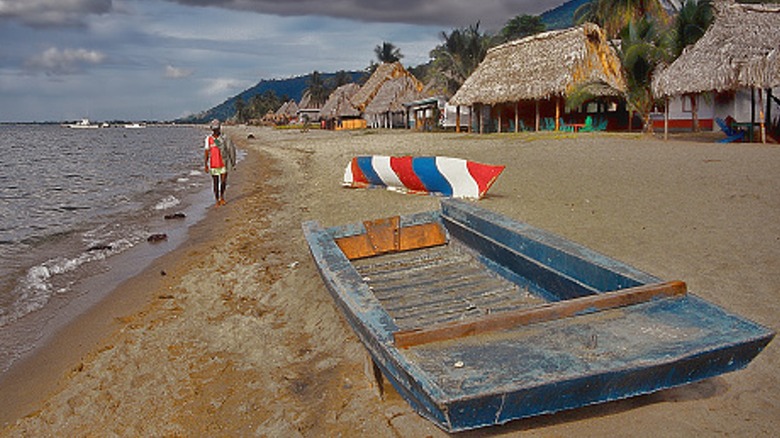Tourists Avoid Visiting Central America's Underrated 'Little Amazon' Because Of Its Scary Name
We may receive a commission on purchases made from links.
When you hear the words "Mosquito Coast," they may conjure images of mud, swamps, and swarms of blood-sucking insects. It's hardly a phrase dreamed up by a tourism board, and while you will certainly encounter some of these things in the actual Mosquito Coast, this Central American region is an area with a fascinating culture and swaths of raw, untouched nature.
Stretching for about 250 miles along the Caribbean coasts of Honduras and Nicaragua, the Mosquito Coast isn't named after flying bugs but rather the indigenous Miskito people who have called the area home for centuries. Travel writer Paul Theroux made the Mosquito Coast famous with his 1981 novel of the same name, which was later adapted into a Hollywood film. While the dark story of a mad American inventor who moves his young family to the jungles of Honduras surely did little to attract visitors to the region, it succeeded in making people aware of the existence of this mysterious region.
The wild and remote landscape depicted in Theroux's book is very real. With emerald rivers, mist-shrouded rainforests, mangroves, lagoons, and staggering biodiversity, the Mosquito Coast — known locally as La Mosquitia — has been dubbed the "Little Amazon." It's possible to visit and explore for those willing to take the time to plan and prepare and not hurry once they're there.
Deep jungle and deep culture
The actual Mosquito Coast stretches from Honduras' Wawa River in the north to Nicaragua's Rio Rama in the south while extending some 37 miles inland into the highlands. It's a largely roadless region with only a few major settlements, including the Nicaraguan towns of Bluefields, San Juan del Norte, and Puerto Cabezas. The rest are small villages. This makes getting around slow and tough: Much of the public transportation is done by motorized boats called pipantes, which means any traveler to the Mosquito Coast must bring along plenty of patience.
The Mosquitia is a melting pot of cultures. While the majority are native Miskito, there are also plenty of Spanish-speaking mestizos, as well as Afro-Caribbean communities along the coast where English is the primary language. There are also a number of pre-Columbian archaeological sites and petroglyphs showing that people have thrived in the region for thousands of years. In 2017, an expedition in Honduras discovered the ruins of the "Lost City of the Monkey God." These may just be the tip of the iceberg, as archeologists consider most of La Mosquitia relatively unexplored.
Nature is the real star of the show in La Mosquitia, and much of it is protected in reserves. Chief among these is Honduras' Río Plátano Biosphere Reserve, which, along with neighboring Bosawás Biosphere Reserve in Nicaragua, constitutes the second-largest rainforest in the Western Hemisphere. Covering 1,235,000 acres in the Río Plátano watershed, the Río Plátano Biosphere Reserve was designated a UNESCO World Heritage Site in 1982. In addition to rainforests, the reserve boasts grasslands, savannas, lagoons, and wetlands that are home to tapirs, jaguars, howler and spider monkeys, giant anteaters, and manatees, along with over 400 species of birds.
How to make the trip
In Honduras, the coastal city of La Ceiba is considered the gateway to La Mosquitia, along with the nearby Bay Islands, which are popular among divers and scuba enthusiasts. It's possible to arrange guides in this ecotourism hub, and La Moskitia Ecoaventuras offers adventure, nature, culture, and wildlife excursions into the region. This is perhaps the easiest way to access a place that's otherwise tough for outsiders to explore.
For adventurous, independent travelers wishing to go to Río Plátano Biosphere Reserve, you can catch a boat in the town of Trujillo that will take you to Palacios, at the edge of the park. For those seeking convenience, the flight from La Ceiba is only 40 minutes. Once you're there, you can hire a local guide for the best experience in the reserve.
To explore La Mosquitia in Nicaragua, head to Bluefields. This rough-around-the-edges coastal town was once the capital of the Miskito Kingdom and is a seven-hour bus ride from the capital, Managua. It can be used as a jumping-off point for visiting local villages such as Pearl Lagoon and the Pearl Keys, which are inhabited by Creole people, the idyllic Corn Islands, as well as the Indigenous settlement of Rama Cay.


